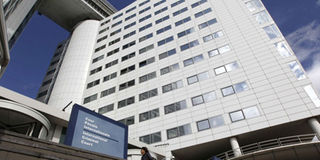Senior African Court judges to meet Uhuru

PHOTO | VINCENT JANNINK | FILE This picture taken on September 5, 2011 shows the International Criminal Court's building in The Hague. Top judges of the African Court of Justice are set to visit Kenya at a time the African Union is pushing for it as an alternative to the ICC.
What you need to know:
- In a statement sent to newsrooms on Tuesday the Court said it was coming to Kenya on a “sensitisation mission.”
Top judges of the African Court of Justice will visit Kenya next week, at a time the African Union is pushing for it as an alternative to the International Criminal Court.
The judges from the African Court on Human and Peoples’ Rights will be on a three-day tour that will see them meet President Uhuru Kenyatta and other government members.
Take over ICC cases
Africa Union member states are mulling over a proposal that the court takes over from the International Criminal Court in hearing cases of war crimes committed on the continent.
President Kenyatta, his deputy William Ruto and journalist Joshua Sang face trials later this year at ICC for crimes committed during the 2007 post-election violence.
In a statement sent to newsrooms on Tuesday the Court said it was coming to Kenya on a “sensitisation mission.”
During the visit scheduled for July 15 to 17, the President of the Court, Lady Justice Sophia Akuffo will also meet Foreign Affairs Secretary Amina Mohammed.
“The objective of the mission is to enhance human rights protection in Kenya through raising awareness on the Court, its functions, its jurisdiction and procedure before it.
“The Court will also hold discussions with various government officials in Kenya, with a view to encouraging them to allow individuals and NGOs direct access to the Court,” said the statement.
The officials will also pay courtesy calls on the Attorney-General, the Chief Justice, National Assembly and Senate Speakers and the Chairperson of the Kenya National Commission on Human Rights.
The officials will also seek to sensitise the public and potential litigants on how to use it in settling human rights disputes or violations and inform them on how to access the Court.”




